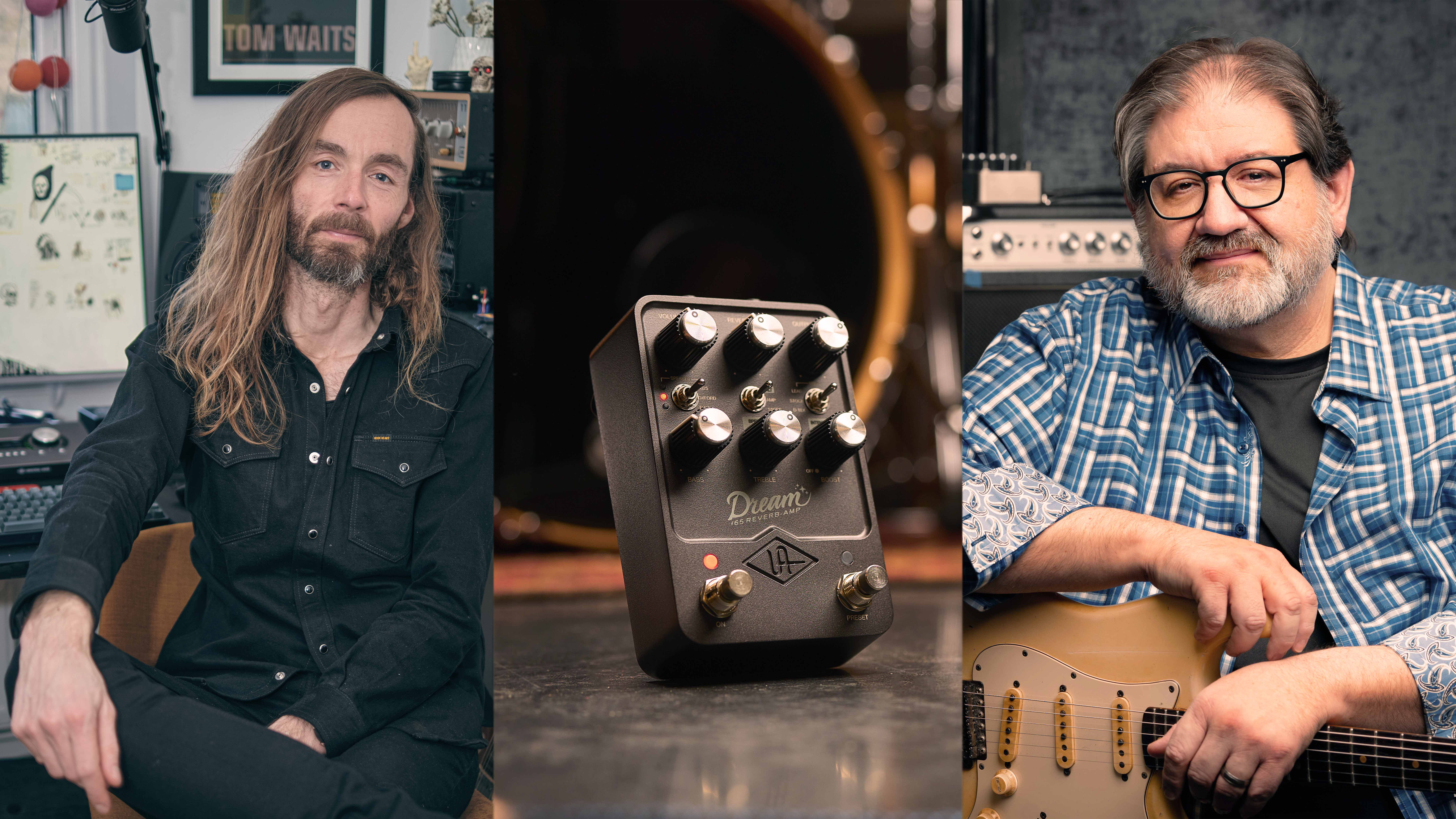
This interview is a deep, detailed dive into the journey of Universal Audio and its guitar pedal adventure. Which is exactly what it needs to be because that's how UA Sound/Product Designer James Santiago, Product Manager Tore Mogensen and their teams approach the process of emulating vintage amps, cabs and effects.
Universal Audio's history as a hardware company that went into software, before developing guitar hardware makes them an unusual proposition. That last stage started with the Ox Amp Top Box and was one founded on very clear ideas and grand ambitions.
It's led to where UA are now; one of the top names in amps and effects modelling, with much more planned.

A lot of what UA does is to really try to recapture the golden era of music equipment, dating back to the '50s and '60s, and later – to try to capture that with with an accuracy that hasn't really been done before
"I think in general we wanted to do the same thing that I think we do with pretty much all our products," says Tore of the UA perspective on entering the guitar hardware market. "With a few exceptions, a lot of what UA does is to really try to recapture the golden era of music equipment, dating back to the '50s and '60s, and later – to try to capture that with an accuracy that hasn't really been done before. And obviously, along the way, to provide some solutions for for musicians that haven't been available to them before.
"I started right after Ox came out at UA," Tore explains of his move from TC Electronic to the Californian company after 16 years. It was more James's project than mine, but it was about really taking a very long, hard look at everything – speakers, microphones, everything that sort of goes into recording guitar – the speakers and microphones once you get out of the amp. Then providing a solution that basically makes it possible for any guitar player to get amazing recorded guitar, once you get out of the amp."
James Santiago knows amps – the more you speak with him and Tore, the more you're reminded of just how passionate and deep their knowledge of this side of the signal chain is. They're a professional team at UA but also musicians with decades of playing experience on stages and in studios. They're also the kind of unashamed gear nerds we feel right at home with. But it emerges they're just the tip of a very large guitar-shaped iceberg at UA.
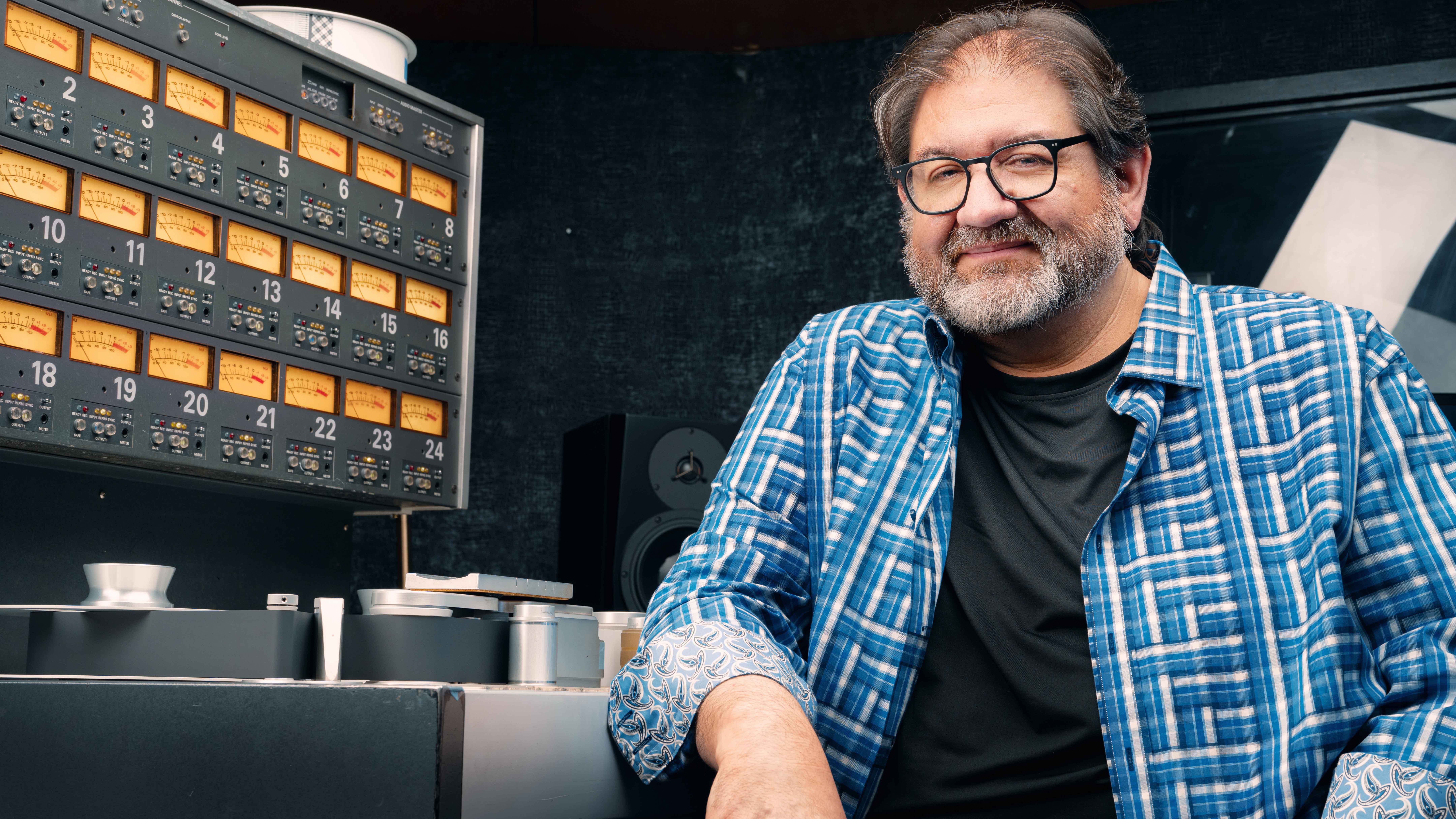
James: "What people don't realise is that the building is full of guitar players," says James. "All the way down to to Bill [Putnam Jr, Universal Audio CEO] who restarted the company with his father's earlier innovations; he's a guitar player. You go to his house, and he's got a '60s ES-335 on the wall. He's got Strats, he loves Les Paul's – he plays jazz music and rock and pop. He's a guitar-playing nerd, honestly. And every other engineer or marketing guy's got guitars. So it was it seemed like a natural progression at some point for everyone to go, 'Well, we can make a guitar product'.
Ox was the vital first step. It filled a need while staying true to UA's roots as a trusted studio equipment innovator, and it had to be embraced by recordists who were looking for a way to capture amps that was not just easier but delivered great results.
"It's one thing to say that the studio environment goes from large format Neve consoles and tape machines," adds James. "And then you've got these plugins that can emulate that and great, I can take that home. What you can't do is still turn on a 100-watt Marshall at home, because you're going to rattle the neighbours. And it's not going to sound right unless it's on 10 or seven and an ungodly volume."
James was seen as the key figure UA needed to solve that conundrum.
"I was talking with Bill at some point and he said, 'You should think about coming to work for us'. Well, 'Yeah, but you're not making any guitar products. It's all studio stuff."
"We talked about this idea because I had all these Marshalls isolated in another room so I wouldn't piss off my neighbours," laughs James. "And then we started asking, 'What if we could do this? What if we could bring the UA workflow and get the old analogue historic sounds out of your guitar amps?' Get into this environment where it was fun and creative?"
This fun and creative emphasis is central to the UA guitar division's ethos, but the idea of Ox was about looking at the signal chain, not just the amp. And that bigger-picture perspective on guitar sound would eventually filter down into the effects and then amp emulation pedals that would come later when the UAFX line began to roll out in 2021 with the Golden Reverberator, Starlight Echo Station and Astra Modulation Machine.
This industry-leading attention to accuracy in modelling that had become a hallmark of UA's plugins would now be showcased and explored in a more tangible way with pedals. Along with a curative and accessible approach to giving players the best examples of classic sounds.
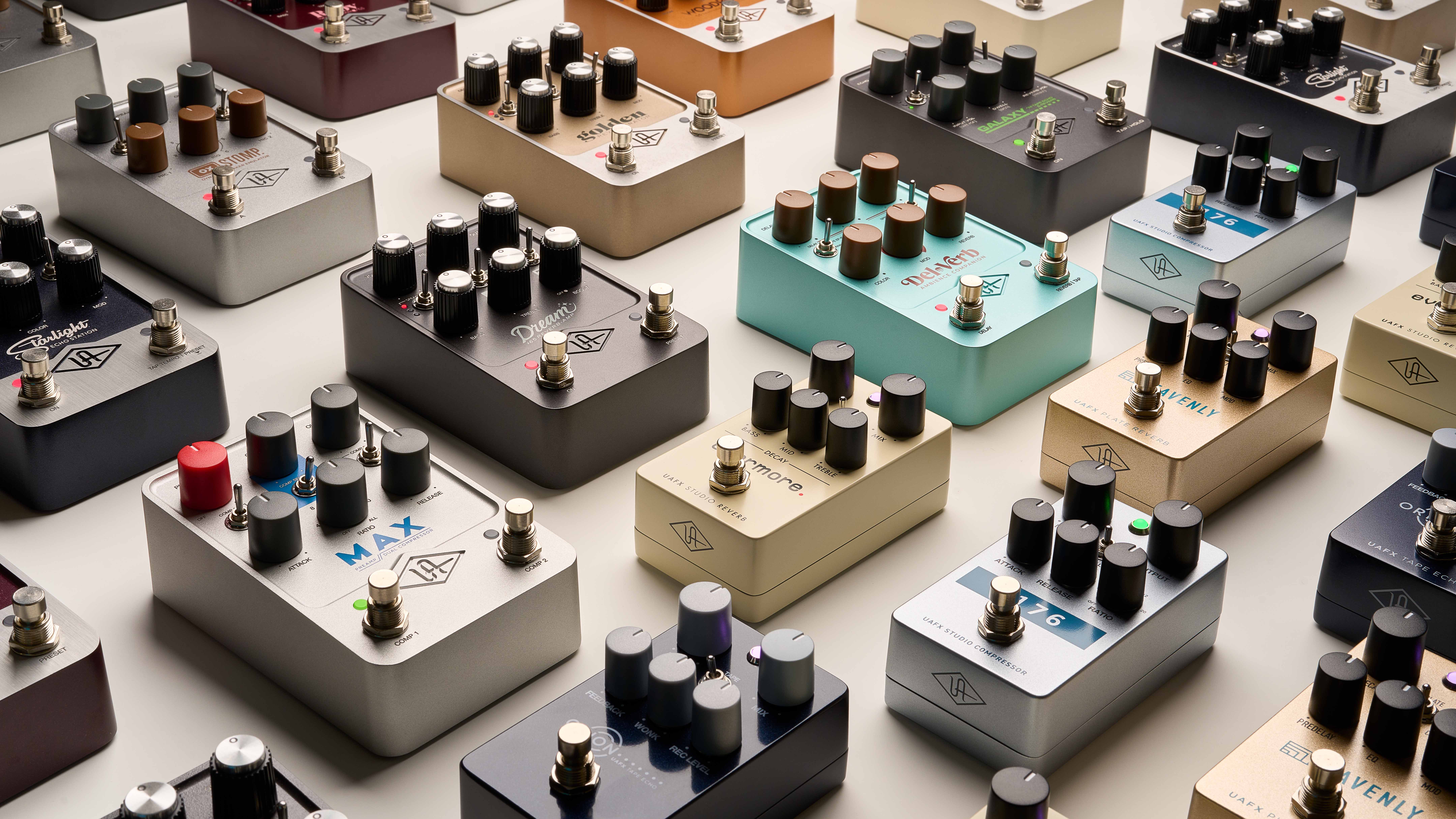
I would say there's a lot of mystery behind the sound once it leaves your guitar cabinet
James Santiago
"I would say there's a lot of mystery behind the sound once it leaves your guitar cabinet," reasons James. "You know, it's one thing to be a guitar nerd and to love pedals and amps and guitars. But then there's this whole other science and creative force behind people who can take your sound and know how to EQ it.
"Put the right microphone on it, use the room, compress it, blend the post effects… it's almost a whole other part of your brain to do that. So that product for us gave us the ability to give it the UA treatment of, let's make the studio workflow easy and fun and get to these historic sounds. And thankfully, it worked."
James doesn't say this lightly – the success of Ox wasn't a foregone conclusion by any means.
"It was pretty dicey for a while during research and development," he admits. "How do we really do this and make this fun and easy? Because I just wanted to be able to use my Marshall and put it on seven, and all of a sudden make it sound like it was 1968 Cream or 1970s, '80s – from Nirvana to Jimi Hendrix and everything. And I think once we realised it worked, we probably should continue to do this. And then we entered into the world of bringing in someone like Tore who's got experience on the other side of that."
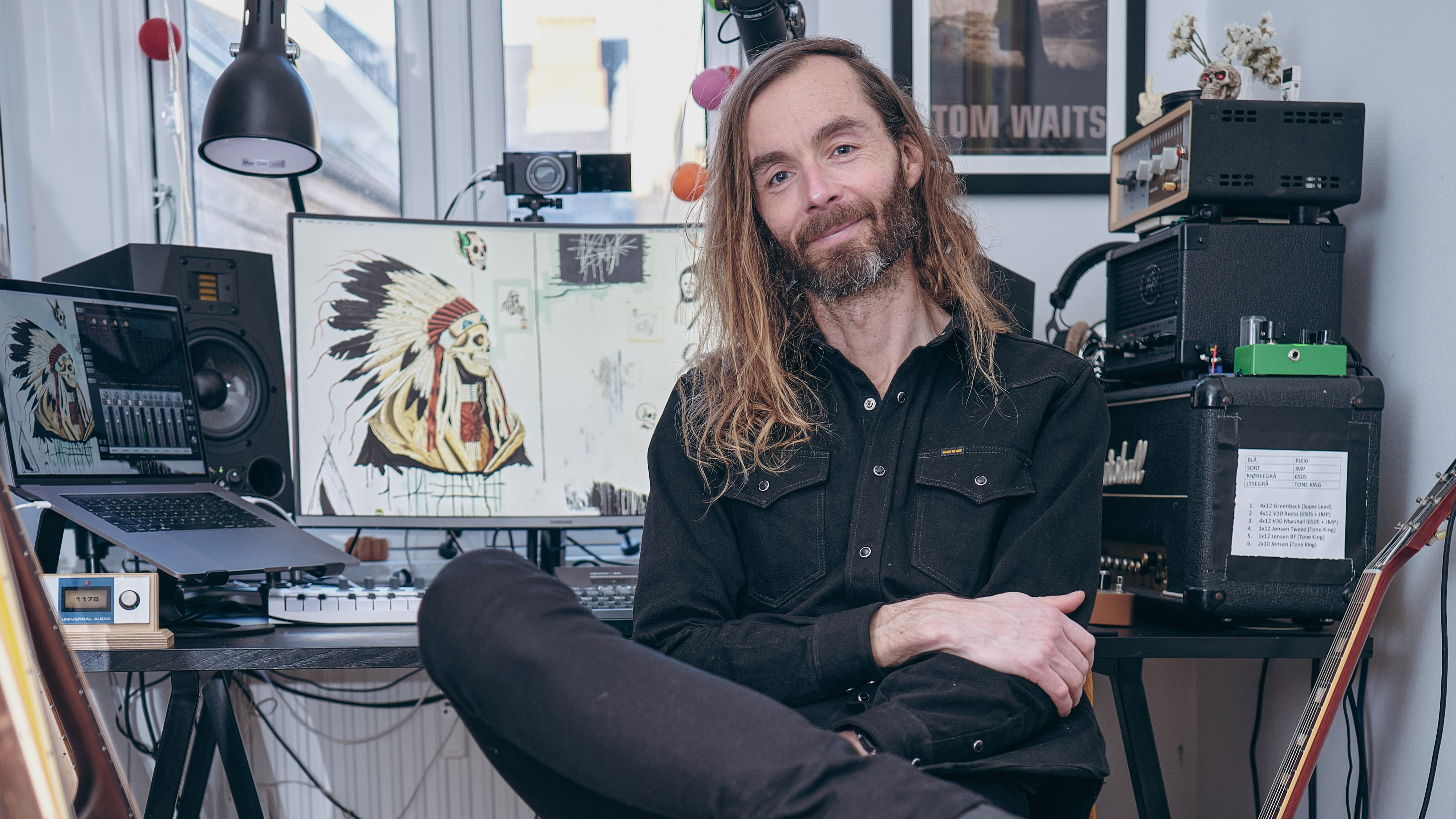
Tore Mogensen had already carved an impressive path in the field of guitar effects with TC Electronic in his home country of Denmark. During his tenure there were huge successes at the company including the development of the PolyTune and the equally forward-thinking concept of Toneprints that enabled the player to customise and expand their TC pedal via smartphone connection.
TC Electronic's refocus on pedals again with series like the Flashback Delay and Hall Of Fame Reverb was embraced by players. So Tore's move to UA in 2018 to join James signaled a deeper investment from the company that went beyond the studio setup. The next stage was affirming UA as a go-to brand for guitar players. Not a simple step.
"I think there's a real trust with brands," says James. "I have certain brands I trust – I like Fenders, I like Gibsons – I have certain pedals I like. You trust the brand, and you trust that company and its sound design. We've reached a point where a lot of people have known Tore for ages. Tore is legendary on forums, you know – there's a whole myth about Tore, the Pedal Jesus and the guy who does all this stuff."
We want to do something innovative and something our heroes might have used
But beneath the online identities are two people who are like the rest of us in a fundamental way – they love guitar. And they wanted to create gear they would use too.
"We're all into this," agrees James. "Because we want to do something innovative and do something our heroes might have used, or some forward-thinking sound. And there's a real love behind it. And not just that we should make guitar products, there was never just a thing on a sheet."
"I think it's a really good point that James made," adds Tore. "When you start out with a company, a lot of times what you do is start something that you're passionate about, and then you build that company. And then at some point, it's like, oh, we've got to grow, or we've got to expand our market or our customer share, or whatever it is. That's so not the case here, even though it's been 20 years in or 15 years in before really starting to make guitar products here."
The question then isn't why UA started making pedals, but perhaps why it took them so long.
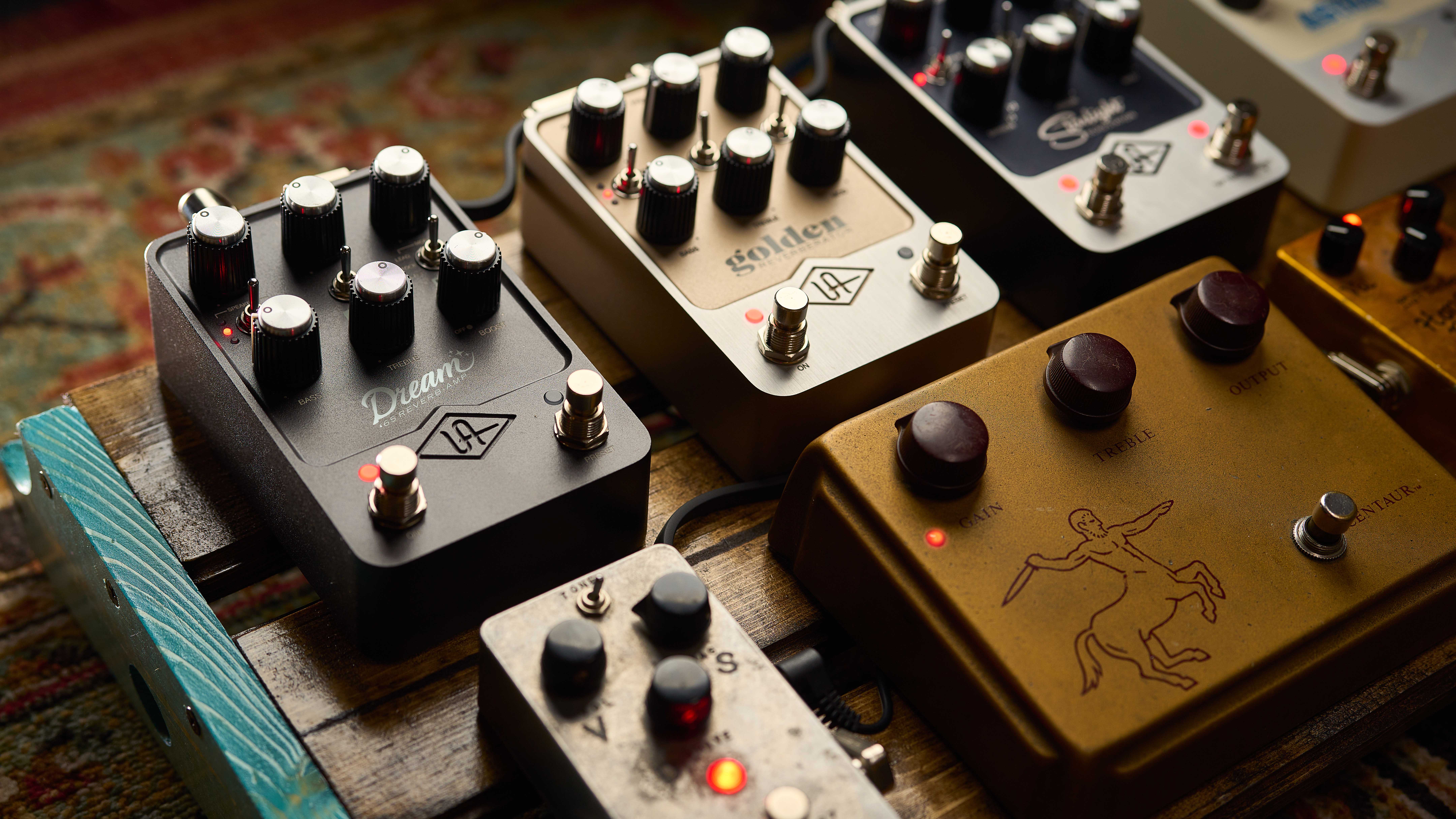
"As James said, it's ridiculous going to UA and seeing how many guitar players there is," Tore tells us. "And the funny thing is, once COVID hit and everybody went back home and we're communicating on Zoom, it became even more obvious.
"Typically you'd be at the office you'd go in and you'd see one of the engineers have a guitar or two or you'd see one of the sales guys but then you watch everybody at home on Zoom. And it's just guitars everywhere you see.
"I worked at a few places in the music industry before and James certainly has as well, but I've never seen that amount of guitar players just permeated through the entire company."
Were you conscious about trying to bring players into the digital world who may have been previously turned off?
Tore: "Yeah, that's very much a conscious decision. Starting with Ox, but definitely also the pedals, there are two things. There's a conscious decision to ask what do we think the customer group tha trying to appeal to would like, but there's also just the other part of what would I like, what would James like?
I want to have fun, and I want to get inspired and I don't get inspired if I have to look at this display and browse through 19 pages of parameters
Tore Mogensen
"As much as I can appreciate the benefits and sort of the flexibility of a lot of the more feature-rich, multi-effects and digital products that are out there, honestly I just hate to use them. I think at the end of the day, what I really like when I have to work with gear is that I want to have fun, and I want to get inspired and I don't get inspired if I have to look at this display and browse through 19 pages of parameters.
"So we very much made a conscious decision to make the products fairly simple. Also sometimes take some hard but educated guesses on behalf of the customer in terms of what they want.
"Again, you can look at Ox and say, 'Well, you have six rigs on the front. It's not 1000. It's not like there are 10 or 100 different Marshall cabinets. We try to make sure that the ones that are there are the best ones, and that they sound great.
"But if your thing is, oh, I want to have four different or 10 or 20 different Greenback cabinets, you're not gonna get that with our products. The same thing goes for the amp pedals. You know, when we put cabinets and speakers into those, we try to pick the ones where they sort of make sense for that amp.
"You're not going to find some sort of metal cabinet that you can put on your Tweed Deluxe because, at least to us, it doesn't make sense – even though it might sound good, you never know. But that's where we sort of try to keep things simple and easier for the customer."
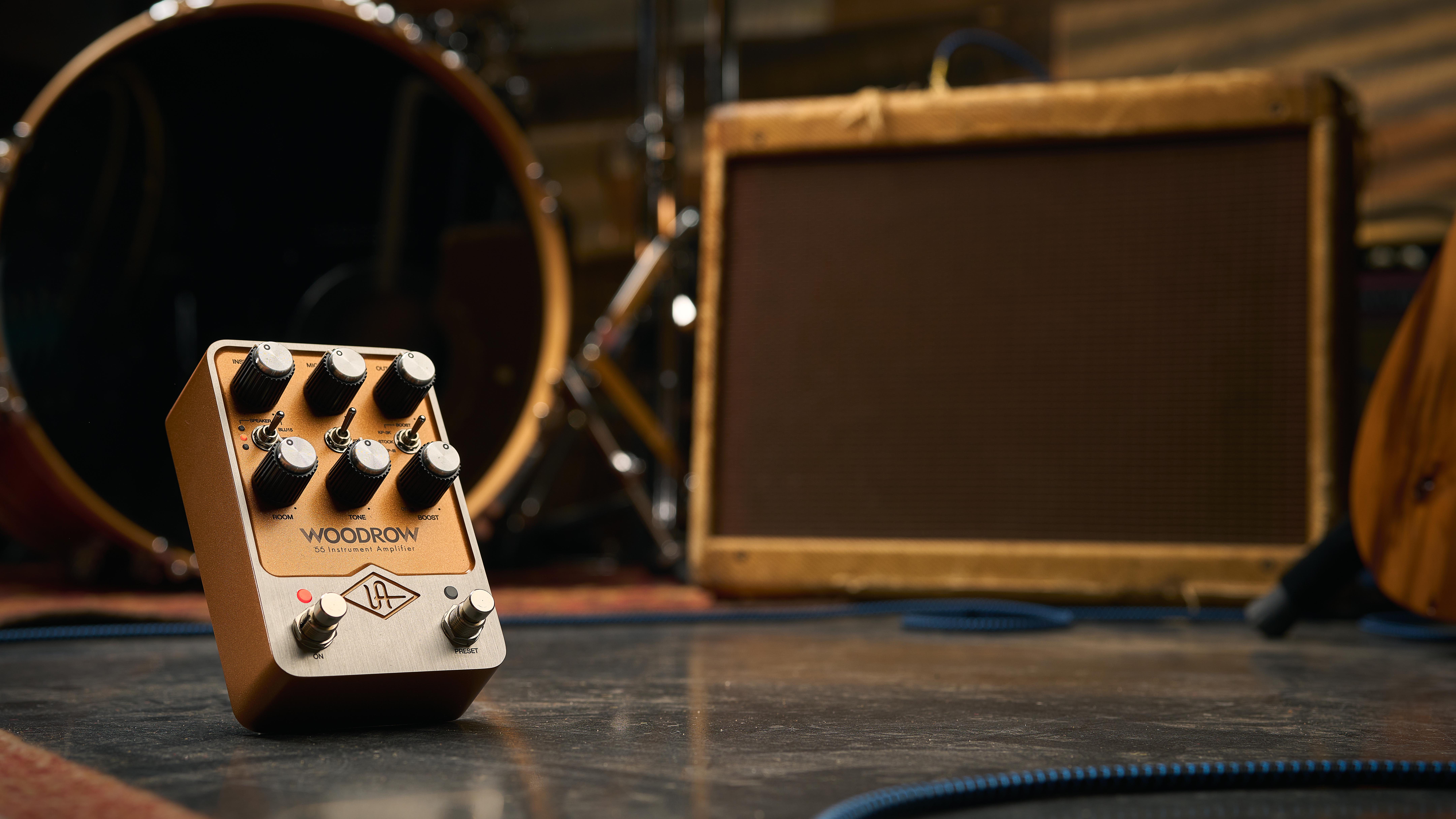
The idea of option paralysis is a real issue for some players with gear now – especially in the modelling realm. And it feels with your amp pedals you changed the conversation and introduced this idea of focusing on modelling one thing, but very deeply and accurately. Have you noticed the influence that approach had elsewhere in the market?
Tore: "Yeah, I think we can see it a little bit. There are some other companies that try to look in our direction. And I think a lot of that came from, obviously, the simplicity of it.
"The other thing just came from the fact that, and again not to point fingers at other companies – there are plenty of companies that do awesome stuff out there, but I always felt that it was kind of weird that if I go to a Tweed Deluxe emulation product from somebody, for example, and it has like a bass, middle and treble controls. I know Tweed Deluxes and that's not on my Tweed Deluxe. It might be nice to have a Tweed Deluxe that did that, but that's not where I came from.
"I like to know that whatever I do and however I turn the knob I can sort of expect the same thing that I would get from the real product. And that's one of the real benefits of having one pedal do one thing – you can emulate the product down to a tee and not add or miss stuff that would have been in the original product or the original amp."
James: "I think when we're even when we're developing things, it can get very complicated. But towards the end of developing stuff, I can't wait until I get to stop messing with the 1,000 things I'm changing, just so I can turn it on and move the volume knob and have it do the right thing.
"Because I kind of don't care about the 10 or 20 other things I might be able to do with it. If it just acts like the real amp, and I move the tone control here and put this here and put a silly little green overdrive in front of it, and it reacts like my real gear, I can go back to playing guitar and not worrying, does this sound right?
I know when I plug into that pedal, even if I'm having a bad day, and I feel like I'm not playing very well, I can trust that the amp sounds right
James Santiago
"Because I think maybe most guitar players are always looking at gear like, is it me or is it the gear? Can I trust what I'm hearing and that it's going to work?
"None of this stuff shares anything when we make an amp model – it's not just the previous model tweaked for some other oddball things. Everything is actually a unique DSP engineer, it's completely from the ground up, so none of this shares anything. It's completely unique from top to bottom.
"So anytime we plug into the Ruby pedal or the Dream pedal, different people worked on them with the different code. But I know when I plug into that pedal, even if I'm having a bad day, and I feel like I'm not playing very well, I can trust that the amp sounds right.
"Maybe some other guitar players have that too; 'I don't sound good today', and it's probably not the gear. Sometimes it's you. And it at least we can calmly say, if you have that speaker with that amp setting, that's the right sound. Maybe it's not the right guitar, maybe you're not hitting it hard enough that day or something. And sometimes I find with other pieces of gear, I struggle to get the tones out of it. If I would reference something, it's not doing the right thing or it doesn't feel right.
"And I don't know if there are any bad tones, there are just tones that don't work for you or don't work for a specific project you're doing. So hopefully when we put these products out, and someone is real fan of that British AC-30 sound, they'll use our stuff they'll go, 'Oh, that does all the good and the bad stuff those amps do'.
"I think the one thing hopefully we're having an influence on is people realising that, unless you include all the weird quirks that these amps had, you can't clean them up too much – it has to have all the bad stuff too. Because sometimes the bad things about those amps at a certain setting is what makes the other settings brilliant.
"Like, 'Oh this amp's really shrill at this setting'. Yes, but that shrillness becomes air and glassiness when you clean it up. And that becomes the greatest sound – maybe the U2 sound is that glassy clean sound that doesn't good at nine. It probably doesn't if you're trying to play metal. But what's bad for one thing makes another setting great.
We don't just model any vintage amp – we have to go find 10 examples of them because not all vintage gear is great either
"We don't just model any vintage amp – we have to go find 10 examples of them because not all vintage gear is great either. And sometimes you have to call your friends and say, 'Want to come over and listen to a bunch of stuff, then pick the best one out of this pile?' So it's a slow process.
"It's the care we take choosing each microphone too – a vintage mic, and we'll have a set too. So it's always this pile of stuff to find what is the best SM57 and the best use U-67. Along with the best Celestion Greenback we could find and the best set of tubes that could go in the Marshall.
"I won't even tell you the pile of tubes I've got sitting in my office…. It has to be Mullard [capacitors] and it's got to be a British tube – it's got to have the real stuff. We get really freaky about all of it. And if anything, hopefully we can get people to appreciate all the little things that go along with vintage gear."
One thing that's been really interesting with digital modelling, and particularly these amp pedals is how they illustrate the importance of cabs and speakers as possibly the most overlooked part of the signal chain. Players can instantly audition different speakers in the pedal. How do you guys get together and select what speaker emulations end up on the pedals? Is there a trusted group of people?
James: "It's usually Tore and myself who take the lead, because I think we've both been around long enough that if somebody talks to us about a specific amp, it's always gonna be, 'Yeah, that amp really needs this V-type 30-watt speaker, we've got to make sure that's in there."
We're working on a new project right now, and I can't tell you what it is, but there is a little bit of discussion of what should those last couple of cabinets be
Tore Mogensen
Tore: "There are certain amps where it's almost like a no-brainer, right? So if you take a Plexi Marshall, you've got to have your 25-watt Greenbacks, you've got to have your 30-watt Greenbacks. And then you start asking, what could be interesting as well? And that's where the discussions come in – there are lot of those.
"Honestly, there's also a lot of trial and error. We're working on a new project right now, and I can't tell you what it is, but there is a little bit of discussion of what should those last couple of cabinets be. Because there's really only a couple that are like the no-brainers, and then what would be cool? What would sort of give us a different sound that could be useful?
"I think the same thing goes for the combo amps as well where for some of them, there are no-brainers. So if you take the Dream, for example, it's a Deluxe Reverb so you've got to have an Oxford in there. But then you start talking. So James is like, 'I know that a lot of those LA studio guys put Greenbacks in the Deluxe Reverb'. Oh, cool, we've got to have that. And then all the Stevie Ray Vaughan fans most definitely want a 4x10 Super Reverb kind of thing going, and we know that the John Mayer types would like more of a 2 x 12 Dumble-ish kind of thing.
"But then there are the Grateful Deadheads – of which Bill our owner is definitely one. So he wouldn't have seen us ship that pedal without a 2x12 JBL combination in there. So a lot of a lot of times, it's more like, yeah this just makes total sense. A few times, there is a little bit more discussion about what would be nice to have on top of the ones that that we need to have."
James: "The painful part comes because some of the speakers we talked about have to be of a certain vintage era, and then it becomes the issue of chasing 30 – 40-year-old speakers. So it becomes this game of eBay, Reverb, every local LA vintage store and my own stash of stuff. Then, ok, which one of these specific Greenback 25s into specific cabs actually sounds good with that head.
"It is interesting where one cab is great on the 50-watt '71 Super Lead, but on that '68 one, I like this other cab a little better. That becomes the painful part of auditioning cabs. And I do have notes where I listen to each one, and I have a grading system, even with my own stuff when I get a new cab. I listened to each one of the four speakers with certain playing styles and certain microphones. And then I spend a couple of days evaluating and then I'll go back once my ears are rested and listen to the sessions.
"You have to pick which one really sounds good, and what I've found is no 4x12 has a set of speakers that all sound the same – each one of them is doing something a little different. I will tell you that it took me forever to find a good vintage, new old stock EVM-12L that we used for the Dream. They're heavy speakers too, and I had to have the certain early '80s ones.
You have to work on the real gear like it's yours – and sometimes they are my amps
James Santiago
"I can't tell you how many times I went down to my local USPS. I'd get speakers and they wouldn't be stock – somebody re-coned it, and used rubber cement to fix the tear. And it's like, no, I need new old stock. And not only that, maybe it's one that's been broken in a little bit and sounds good. Because I would put it in the real amp.
"I'd lose a day, getting one, trying it, putting it in the Deluxe and miking it to find it sounds terrible. Take it out, buy another one. And that's painful. But I think that also shows you have to work on the real gear like it's yours – and sometimes they are my amps. I'm trying to find that speaker that I could take to a session and say, 'This is the real thing.'
"All of these things that we put into pedals actually exist. So if you said, 'Hey, can you bring the amp with that speaker in it and really make it sound like that?' I 100%? can. If you call me and Tore we can grab all that stuff, show up somewhere, put the mic on it, and if you put the pedal against that, you likely would not be able to tell difference. Because it really does exist."
When we need to we need to blast through, you also run the risk of just blowing speakers up that you just spent a fortune on on eBay to get the perfect vintage sample
Tore Mogensen
Tore: "Just to chime in – the EVs are not that bad but some of the other speakers are not really designed to play that loud. You want to find the perfect set of Greenbacks, and just crank a Marshall all the way up – because we emulate the cone cry and everything. So when we need to we need to blast through, you also run the risk of just blowing speakers up that you just spent a fortune on on eBay to get the perfect vintage sample. So that's a whole other part of that that's happened a few times in the past."
James: "I have definitely borrowed gear from some friends that had better sounding gear than I owned or we bought. And I can give you one good one that most people don't know. The Marshall Lion pedal was a hard one because I really wanted us to have a specific '68 cabinet. And to have the Tolex ripped off of it like Van Halen used to do back in the day. And that was a big ask.
"I was sitting around with a buddy and said I really needed a '68 stock and it would be cool if it was Van Halenized – the Tolex ripped off is supposed to make a difference. He said, 'I have one of those and you can take it'. That's one of those weird things where sometimes our asks are a little quirky.
"As Tore said, we put a specific era of JBL in the Dream pedal. And it wasn't just that it had to be that model. I went and found an actual '68 amp that they called the Drip Edge Silverface Twin that had the original F version logo of the JBLs that went in those, that supposedly was the first time Jerry [Garcia] started using Twin Reverbs.
"So I went on the hunt in Los Angeles to find the '68 Drip Edge JBL officially installed set, just to find one I could put in the Deluxe amp [we modelled]. Because why not do it right? If somebody gave you a corporate card and said, 'Go buy some cool gear' –that sounds like an awesome job!"
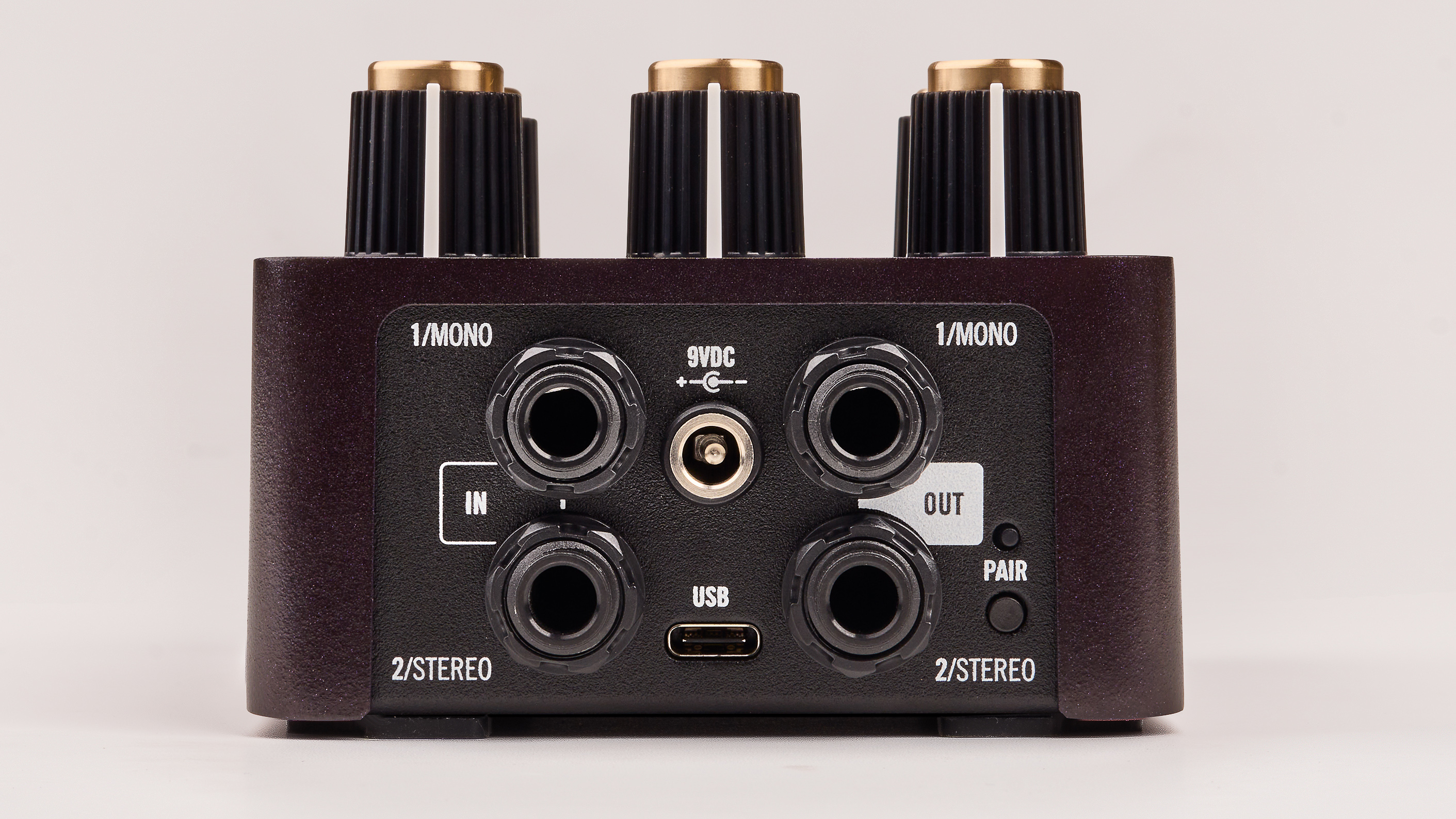
Gear forums can obviously be interesting places for opinion and critique, and UA staff are active on them – they're reading and responding to some questions that come up. But looking back on the UAFX pedal releases so far, there's been a common criticism about the lack of MIDI. How do you feel about that now – do you think that the MIDI crowd is a vocal minority, or is it something that you are possibly reconsidering in the future?
Tore: "To be honest, I think to a certain degree that the MIDI community is sort of a very vocal minority. When we designed the pedals originally, I actually spent a bunch of time, mostly on The Gear Page, going through… there are certain threads where people basically just post pictures of their pedalboards.
"So I was just going through it and looking at how many people actually use MIDI out of all these boards that you see. I think they're probably up to thread number 20. And they get filled up, so they have to start a new one. So it's literally thousands and thousands of posts and thousands of pictures of pedalboards. And [MIDI] was very much a minority.
"With that said, it's definitely on the rise. It's definitely something that's happening more. People are getting more used to buying, say a GigRig or a [Voodoo Lab] Commander kind of thing. Or even using a multi-effects unit to control additional pedals. So I'm not saying that it's not a valid comment.
"I think our thought with these pedals was that, as we talked about before, they're supposed to be simple, they're not giving you a million different options.
I think if we were ever to do anything bigger than what we're doing right now, we will probably add MIDI to that
Tore Mogensen
"So there's a certain point when you have a product without a screen on it. There would be no problem for us to basically have a row of LEDs and you get seven segments and say, you get 100 presets. But there's no way to tell what setting you're on. And I find that at some point, it just gets too confusing.
"Whereas if you have two sounds that you can switch between and you know what they are that's, at least to me, that's very reassuring. I'm not stepping through preset number nine and then have no idea whether it's one thing or another.
"I think if we were ever to do anything bigger than what we're doing right now, we will probably add MIDI to that. But that would also entail that there would be some way to actually have a little bit more visibility about, what is this sound about? Where are the knob positions? If it was an amp pedal, what cabinet have I chosen? Is there a boost on or not?
"If you're just having something that's simply a pedal, at least to me, it becomes too hard to remember and sort of confusing more than actually helping."
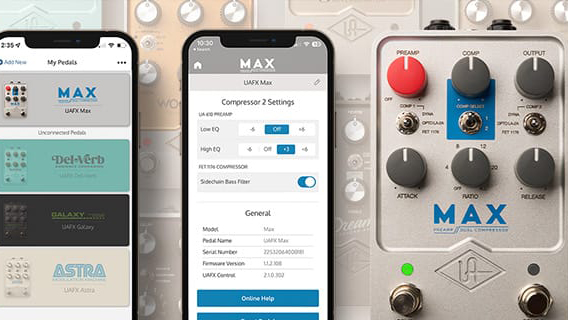
The Bluetooth-enabled pedals use the UAFX Control app to access features and some artist and factory preset sounds. You've released it for iOS and Android – does that pose a challenge with the different versions of Android on smartphones being rolled out at different times?
Tore: "In numerous ways, to be honest. So obviously, there's the constant churn of just making sure that everything works with the latest version of whatever. And the challenges with Apple and Android are actually two different ones.
"The problem with Android is that there are so many different versions, there's so many different implementations that being able to sort of promise that you can support everything is not really feasible. We have to pick our poison and basically say that these are the models we support. And then with everybody else we have a pretty good feeling that it'll work as well.
There might be some quirks and there might even be some phones that will not work. So that's sort of the plethora of the Android universe makes that hard. The problem in the Apple universe is more that Apple is very… they're not shy of changing things that potentially could break things or would entail engineers like us and people tied into their sort of ecosystem having to spend like six months getting something to work.
We're aware that Bluetooth for us hasn't been working ideally, to be honest
"Often you don't really get an alert in due time. So that's definitely an ongoing thing. Right after this we have our weekly app meeting where we go through all these things. So those are two things.
"The last thing that's just tricky, and that's a whole other thing, is just the Bluetooth sort of implementation. And we're aware that Bluetooth for us hasn't been working ideally, to be honest. It's not really an excuse, per se, but it's something that a lot of companies sort of dabble in. I have a lot of products from other companies, for all sorts of stuff, where Bluetooth is something that sometimes works, and sometimes it's a little bit more tricky. And that's something that we continuously work on improving. Basically to make sure that people can access their pedal and do the tweaks that they want to do.
"As cool as it is to have that ability to be able to deep dive, have presets, tweak pedals more deeply than you could on the [physical] product itself, it's definitely a pretty big chunk of the development. And typically when you put out a pedal, it's like, oh, we finally did it, it's done. Let's move on to the next thing.
"With the app side of things, it's very different. You have to constantly be on your toes and keep churning on it."
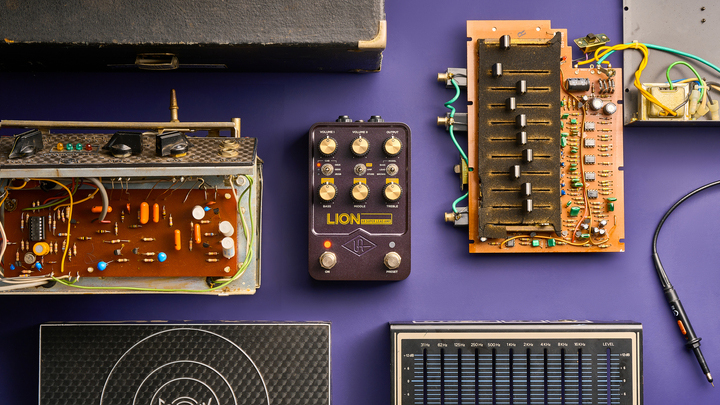
Another awkward question now – the lack of headphone output on the amp pedals, was it ever a consideration to have them and is it something you now regret not including?
Tore: "I don't necessarily think that we regret not including it, because it was very much a decision from the get-go. And honestly, part of it was more of a consideration about how people would use it, I know that some guitar players like to do more of the vintage style. James is like that where he will put all his pedals in front – all his delays and reverbs in front of the amp. But I do the opposite, I always like to crank my amps quite a bit. I'll get most of my dirt from the amp.
"So, if you do that, and then you have your delays and reverbs afterward, it really doesn't make any sense to have a headphone out on your on your amp pedal, because you'll be playing without your delay and reverb. So there is a little bit of that. Whereas if you have a separate solution, if you need that, you can put it anywhere you want to put a little headphone in there, or headphone preamp wherever you want to afterward.
"The other part is also just the fact that the platform is not really born with that and it would be really, really hard for us to fit it in there without making it quite a bit bigger. And also quite a bit more expensive. Which at the end of the day would get back to the to the customers in terms of how much the product would cost.
"With that said you can actually, if you really wanted to, and we tried it, it's not the ideal solution, but if you plug in two quarter-inch jacks and then to stereo headphones you can actually play through the pedals. They have enough power, it's not going to blast your ears to death but it's it's going to be loud enough for you to jam at home I think. So there is there is a possibility but it's not the ideal solution. I totally get that."
I've found mini modelling amps like the Spark Go are a good workaround too, with the amp set to a flat response.
James: "Headphones are just not that much fun, honestly, unless you're being quiet. We've had this discussion with players who just want to practice and then musicians who use the fancier version of which are essentially custom moulded in-ears, because you need to play on a quiet stage. It's just not a whole lot of fun unless you really have to have that.
"For me, if I do have to use headphones, which is very rare, I try not to only because you damage your ears typically with headphones without noticing it because you turn up louder than you think you are. So I try not to do that I'd rather use monitors very quietly.
"I always ended up having to sub-mix something because I was always wanting to practice over something, which means I really needed to take that also to a little mixer and then mix in a little iPod player or my laptop sound, so my headphones could actually hear the thing I needed to practice on top of with the guitar.
"I can't really just plug into my pedalboard because I still need to get something to work so I can practice to or learn somebody's songs. So I found that that was one of the things where I don't really miss it, because when I always had to learn a song I needed to mix [the guitar signal and streamed audio track] into in-ears or headphones. So again, if we were to do we'd have to make a whole lot of crazy changes so it would actually be useful.
"I hate to say but I've been down that road before, where you're like, man, once you do a little bit of something, you need to take it all the way and finish it. Because you can't just give people a quarter of that feature, then it just looks like a bad feature. Well, you gave me a headphone out, but why can't I use my phone and turn the Bluetooth in the other direction to stream a song into there? And that's a different product.
"You mentioned the Go product – so there are products that do that really well where you can stream to a boombox, get a decent guitar tone and just practice. Nothing wrong with that, but it is a different thing. That's a practice tool as opposed to, this my recording and gig tool. And so sometimes they're not the same.
"So I do feel that when someone's like, 'Oh, man, I have to use this other thing in my hotel room'. It's like, 'Dude, I'm bummed for you too. But here's 25 bucks. Let's go to Amazon and order you a little headphone amp'. And that's a terrible thing to say out loud. I'm sorry."
That's a fair point, and the pedals are good for playing at low volumes at home too. But as you say, these are completely viable solutions for recording and playing live. With that in mind, what have been your proudest moments learning about players using them – The Edge using them with U2 at the Las Vegas Sphere must be right up there?
Tore: "The Edge is a big one."
James: "I have not talked about it all but I did see one of the last shows at Sphere. And I did go under the stage to meet with the guys right before showtime. They're like, 'You're here, come under this'. The venue was packed, crowded all the way to the front. So they snuck me under the stage right there, about 20 minutes before they went on, to show me the setup.
The opening song which is the Zoo Station intro where Edge plays to start the concert – that's the Lion pedal
"I know I can't share any pictures or anything, but they showed me this little rack that basically had shelves that just had Rubys, Lions, Dream – every one of our pedals was on a shelf. Dallas [Schoo, Edge's tech] was like, 'We use every one of these and when you watch the show tonight, the opening song which is the Zoo Station intro that Edge plays to start the concert – that's the Lion pedal. He's not even using the Ruby. He loves the Marshall sound right now. We just got it this morning. And he was into it. He put it in the rig today.'
"And they were just so excited to have consistent tones that were in for Dallas it was he got to not be pummelled by the amp, because under the stage used to be where the amps were. He had to live in this world of just the amps hitting his head and the craziness of keeping a whole locker room full of amps under a stage running during a show. He was so happy: 'It's so great down here. Look at the shelves and it works perfectly'.
"Then meeting the front-of-house engineer and then just seeing the show was great, because you saw what he had. And we talked about MIDI – Edge has a lot of programmed changes, a lot of timed delays. So he had this crazy amount of rack delays and post-effects stuff. And he goes, "I'm using the pedals exactly like I use the amps," because all he did was get rid of the amps and that cable that would have gone to multiple AC-30s and Twead Deluxes just went into the pedals as a drop-in replacement for the rig. That's what we're doing.
"And I was shocked to see it because that's what we wanted with someone. And we had these discussions, me and Tore saying, 'We want somebody that if they had their pedalboard and their backline at a gig and if the amp went down, they could just take that cable, plug it into one of these pedals and it will do the exact same thing and go straight to house. That's what they did. And in fact, it was a full circle moment because I had talked to some of the [other UA] guys before we even did the stuff. So it was like, 'Hey, remember that thing you talked about trying to do? You did it and the pedals are here tonight, and they're onstage and you're about to see them go live in 10 minutes go live and that along with and so that was in toward great idea.
"It was a real live version of what Tore was hoping would happen, when this idea came up but he pushed us through to get this sort of team together to make these amp pedals."
It's incredible that the Lion has actually inspired The Edge to change his amp choice on Zoo Station.
James: "It was totally, totally nuts. And then you realise that he talks to his other buddies and then you get a call from Joe Walsh going, 'Hey, man, I was talking to the Edge and he said I should try these pedals.' And then that guy, talked to John Mayer. And then you realise all these guitar nerds talk to each other. Bob Weir talks to Mayer. That's how the natural growth happens. Because you can't just make somebody like a product or a sound. And I think any one of us know the same thing where you have a friend and they say, 'You should try this pedal', or, 'You should borrow mine and check it out'. And that natural growth of tone nerds sharing cool ideas and new products.
"I started seeing that happen with that crew of folks, or the technicians on those tours telling other techs, 'Dude, you need to get one of these'. And we've started to notice that when we get calls going, 'Hey, I was talking to this guy's tech and he said, I should use this in my thing. And we have a TV show we're going to do when we have to have a quiet stage, can we try the Lion thing and try the Ruby thing?'
"It's really nice to finally see – the people that we thought were the benchmark when we were working on the pedals. The Ruby has to sound like the Edge, Tom Petty and Rory Gallagher – all these vintage players, and then you start seeing some of those actual players using the product. It's very weird."
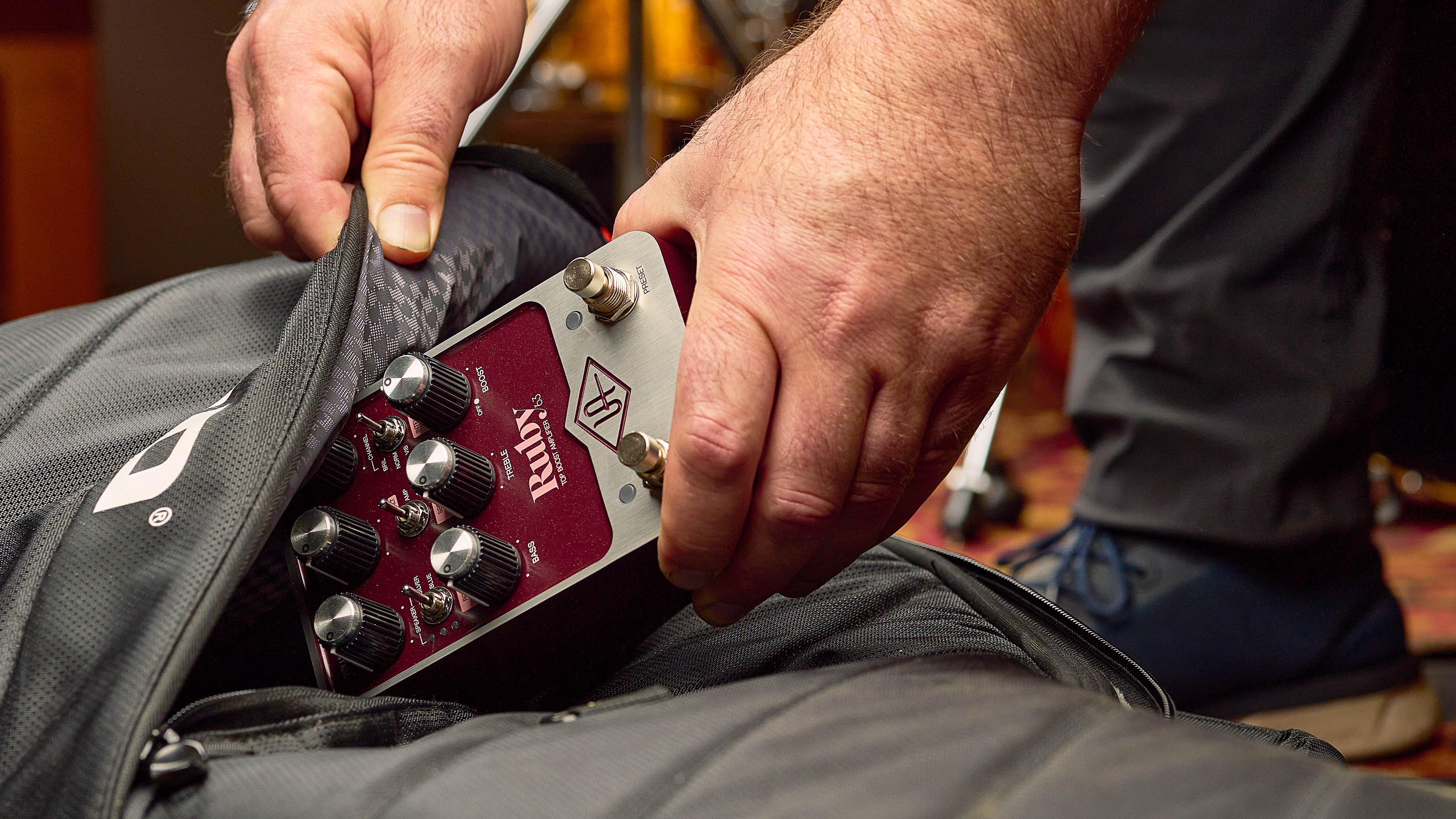
The tube Vs modelling debate seems to be a bit of a distraction now. It's really about what's suitable for the situation you're in as a player.
James: "That is the exact thing. And this was another discussion. Some of these players who have basically created these classic tones, benchmark tones, they [think], in the financial and the physicality of, 'Well, I can't take this amount of gear to a gig, well, I can't be this loud on stage'.
"These players can be any volume they want, can buy any gear they want – they can take anything they want to a gig. That's what freaked me out too. We're like, 'Man, you can use real amps, you can use anything you want, and you're still using the pedal'. Even that kind of messes with my mind.
"They have all this gear, they can throw it on a plane and fly it to the middle of nowhere and do a show and no one would bat an eye. So that's when you realise for some of these players, they got that sound because when you look at it, they were experimenting and chasing the tone in their head and whatever the best tool for them to get that tone was what won.
"With these players now some of this is vintage stuff now, but at the time, it meant like someone like the Edge was using the newest Eventide Harmonizers that were brand new in the '80s and '70s. Or the early bucket brigade Memory Man delay that was new in 1977, whatever.
"They were searching – they were using those new tools. Now they're vintage, but then they weren't, so you realise this is their mindset – they have this tone. And if this gets them there, they'll use whatever whether it has a tube in it, a chip, a transistor – it doesn't actually matter. Because to them, writing a great song and having a great guitar sound that's inspiring will always be the winning part of that.
"I've had to learn from that too. I'm sitting here with a sunburst Stratocaster – ooh, I'll play better because it's sunburst. It's got a maple neck and it looks cool. Then you realise like, well for me, is it the best-sounding one? Maybe not, but I feel better.
I feel very lucky that somebody's willing to try a broken down tube amp that's hiding in this high technology little box that we put together
"Sometimes you have to disconnect the look of the gear because sometimes you hear with your eyes – ooh it's vintage, oooh it looks pretty. These people don't care. How many people used the Whammy? Edge is one of the first guys to grab a Whammy and use it. That was a brand-new product. Some of these players did groundbreaking stuff already are still trying to do that. And doing that.
"So I feel very lucky that somebody's willing to try a broken down tube amp that's hiding in this high technology little box that we put together. Essentially these amps are falling apart. And you might have said earlier Rob that there are a lot of people who have heard the sounds but will never have the chance, or haven't had the chance to use the real thing. Because it's very rare to walk into the guitar store or even have a friend that said, 'Hey, I've got a really good working AC-30 Top Boost from 1963'. To find one that's in working order, that doesn't have the speakers replaced or isn't going to fry after 10 minutes, it's becoming harder and harder to find that. So I even feel bad. I wish everyone could sit in a room with vintage AC30s or vintage Plexi Marshalls and have that experience, and a lot of people won't – I'm happy we're trying to do that."
There is something about these old amplifiers, or these old delays, or these old reverbs that help define an era
Tore Mogensen
Tore: "Obviously, we're extremely thrilled that sort of the highest profile players choose to use our products and choose to use it over 'the real thing' for various reasons. But I think the other part of that, which James also sort of touched upon, is as you can probably tell, James and I are pretty passionate about this thing and vintage gear, the whole history and everything about this whole sort of ecosystem that we're talking about. But there's a lot of young folks out there who don't really know all that much about it.
"So for us, one thing is the amazement that somebody like the Edge, who has been playing AC30s forever, actually thinks that our model of an AC30 is good enough for him to play at the Sphere – that's mind-blowing. But for me, there's sort of an education of bringing the baton along to a newer generation and saying, yeah we know that modern amps are also great. I'm not saying that everything has to sound like the old stuff. But there is something about these old amplifiers, or these old delays, or these old reverbs that help define an era.
"For better or worse, they also help define the sounds that we know in our head, because it's really hard to explain sounds. What's that sound? Well, it's sort of chimey. And it's sort of mid-rangey, and it has a little bit of a piercing treble, but it's not too much. And people go, 'Yeah, I don't quite get it.' Well, it's an AC30. And then people say, 'Oh, I know what you mean'. So, for better or worse, we all use these vintage pieces of gear as reference points for what sound is. Even modern amps. What's a Friedman? Well, it's sort of like a Marshall with some extra stuff added and some changes. But at the end of the day, it's sort of a Marshall.
Being able to do this with this level of detail, honestly makes me proud because I feel like we're passing a little bit of music history along to younger people
Tore Mogensen
"So it becomes easier for people to talk about sound because we have these common reference points. And being able to do these pedals at this level of accuracy and quite honestly, stupid nerdery – at least if you look at it from just sheer time spend and effort perspective.
"You know, being able to do this with this level of detail, honestly makes me proud because I feel like we're passing a little bit of music history along to younger people who might not have ever tried or had the chance to play a Plexi Marshall cranked all the way up, with an Echoplex in front of it and a vintage 10-band EQ – all these things that went into some of these classic sounds that we all know and love."
I think the form factor is really important too – and being able to focus on one amp with its controls. It's akin to having an album instead of a massive choice on Spotify. To really explore that one thing and appreciate its versatility – I found that especially with the Dream.
James: "What's odd is when you play that pedal I just think about how that specific amp [that it models] is real, it sounds just like that pedal and literally came from a collection 10 minutes from my house called Norms Rare Guitars – the famous guitar store. And again, everything has a story. You're playing an amp that was a session guy's – he wouldn't tell me who, but a session guy's in the '70s that Norm had bought and he was hiding it in his store, in his back closet. I said, 'I need the best Deluxe Reverb. He said, 'You really need the best one? Because I've got one back here you should hear'.
I like grabbing the pedal and playing going, 'I know that's the right amp'
"It was hiding back there amongst all these '59 Les Paul's and '50s Strats – all this expensive gear. He pulled it out and I played it in the store on ten. That had the best clean, the best lead… and the pedals all have this little history of finding the gear, trying it out having friends play it. And so I'm always happy to tell someone like me, 'Trust me that if you had a room full of these amps, you probably would have said, 'Well, I don't need those other nine. That's the one'. And that's the excitement we get.
"I like grabbing the pedal and playing going, 'I know that's the right amp'. And I remember that amp, and it's doing the right thing. So that's the excitement, and I like the tone and the form factor; treble here, volume here, reverb. Cool. I'm done – time to play some guitar. So I'm happy you had that same experience, because it's fun for me to hear that."
Do you feel or know that you're at the end of an era for the pedals now, and on the precipice of another stage – can you tell us anything about the the vision is for the future?
Tore: "I think that there are still amps out there that we would love to do. I think that, without going into too much detail, and you can't see it, but I have this little pedalboard – a little Pedal Train – with all four amp pedals sitting here. And it's like the greatest hits of '60s guitar tones. It's ridiculous. And it's so much fun doing little sessions. Before I'd end up probably just playing everything through my Super Reverb down here. But now it's like, 'Oh, maybe I should actually put a little AC30 in here for a little bit'. Creatively, it's a lot of fun.
I don't think we've hit the ceiling of what we can do and what we want to do on this platform yet for sure
"But at the same time, there are definitely still amps out there that I think that we would need to say that we've fulfilled the archetype sort of collection of killer guitar tones. You can always keep adding more, but there are definitely a few that I still feel, maybe not from like a product standpoint, but almost more from a music standpoint – what are what are classic guitar tones? The sound of the '90s or the sound of the early 2000s, or whatever it is. And without going into detail, there are definitely still amps we're missing.
"We're missing a few from different eras… I don't think we've hit the ceiling of what we can do and what we want to do on this platform yet for sure."
James: "If you ask me, Is there stuff coming? I can't tell you. But I can parenthetical out a wink. Because as long as I'm still working here, and Tore is, there's always going to be stuff coming and we're going to try to push the envelope. I'm just saying things are getting interesting. Very interesting right now with where we're going."
And the road is open with regards to future effects pedals too?
Tore: "Most definitely."
James: "Absolutely."
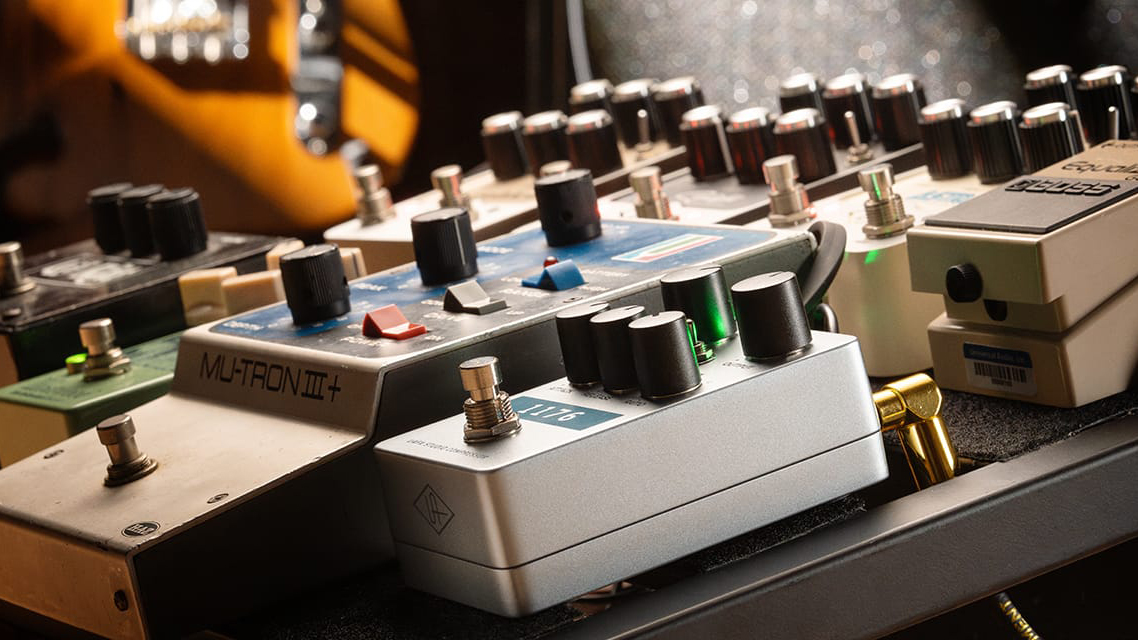
Are you never say never when it comes to a Universal Audio big box unit like the Neural Quad Cortex?
Tore: "We don't want to say never, ever. And there are certainly a lot of interesting aspects to having something like that. It's not something that's in the immediate future. Again, honestly, this is not trying to point fingers at other companies, but if we just look at the sheer processing power of what's in one of these amp pedals, and you sort of compare it to some of the high-end multi-effects products that are on the market now, they certainly have more processing power than we do. But they also run multiple amps, sometimes in wet/dry/wet setups with two different reverbs that they can toggle between in any given sort of rig or scene or whatever they call it. Multiple delays – basically full pedalboards with multi-setup amps all running at the same time.
Our algorithms are so detailed, and they take up so much space that we could never run anything that we do on the multi-effect product platforms that are there right now
"They need to be able to run at the same time too, because preset changes take too much [time] for a Helix or an Axe-FX or a Quad Cortex or whatever it is. So, the way most people use these now is that you build a scene or a rig, and you stay on that. The only time you change is if there's a song change, and you need something radically different. But typically you'd stay within that one scene, and just run everything within that. Quite honestly, our algorithms are so detailed, and they take up so much space that we could never run anything that we do on the multi-effect product platforms that are there right now.
"So for us to do that would require a much more powerful processor to even start thinking about something like that. Otherwise, the other option would be to drastically scale down on the details of the algorithm. And with that comes scaling down on the quality of the algorithm and the sounds, and we don't want to do that."
James: "There was a running joke for a while when we first started this. Our previous UAD platform, it still runs on a SHARC processor. And typically when people run plugins, if you have a really expensive plugin, you have to eat the whole shark – you can run so many things off the shark. And as we were early developing, working with our guy Dave Berners, who's the doctor [algorithm co-designer for Universal Audio's entire plug-in line] said, 'I think I got the first Tweed Deluxe running – we just need six SHARCS. And then he was actually serious. And then as we developed it was, 'It's running – but four sharks'.
I'm looking forward to the next 2,3,4 years – how we can innovate as platforms change
"It's engineering humour but to do it right you basically say, well, how much processing power do I have? Because I'm going to use every single thread of that thing. I'm going to use everything we can. And that's the real pain of it. Any one of us would like one of these boxes – throw it all in one giant box. It sounds like fun, honestly. Then comes the reality of, yeah, but then it would be like $4,000 and it would be crazy.
"But yeah, you can never say never. I'm looking forward to the next 2,3,4 years – how we can innovate as platforms change. Even things like an ARM processor – the compute power. There are the physics and law of how you design these chips, and every three years things double in speed and get half as expensive to create. So even right now, in three years, who knows where we'll be, and what what amazing processor is going to come out that will let us run all this stuff that just barely fits on what we can get right now. I'm excited to see where we land as well, honestly."
- For more information about the Universal Audio UAFX range, visit uaudio.com







